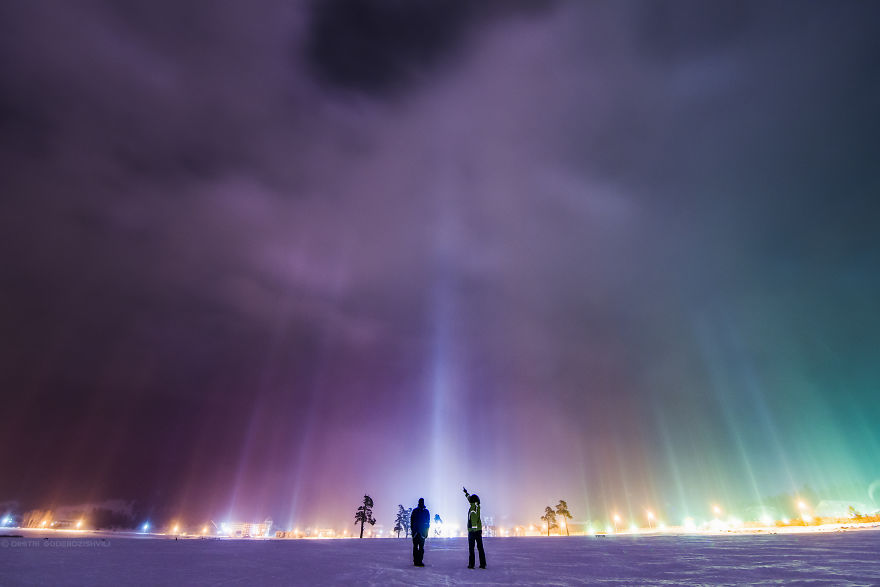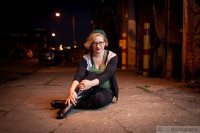
DIY studio lighting solutions One of the most important skills that photographers can learn is how to control and manipulate light. After all, it's the very definition of photography! So if you aren’t already a master of photography lighting, use this quarantine time at home to explore and practice lighting techniques.
In this article, I’ll show you some of the most popular lighting solutions that professional photographers use, and DIY versions that you can make with regular household products.
This guide is geared towards those with little-to-no knowledge of lighting, but it can also be useful for professionals. Gear can malfunction at any time, and it is helpful to know how to hack quick solutions, especially on paid jobs.
Light sources: Pro Photographer Version
The lights that professional photographers use can fall into two broad categories: natural light and artificial light. Natural light simply means any available ambient light, most commonly sunlight. The plus side to natural light is that there is plenty of it available, and you can use it as-is or with modifiers such as a reflector (more on this below).
However, the downside to natural light is that it changes throughout the day, and is not always consistent. Natural light at sunrise or sunset has very different qualities than that of midday natural light.
While it's beneficial for pro photographers to know how to use natural lighting, understanding how to use artificial lighting is also valuable since one cannot always rely on natural lighting to be available. Most photographers incorporate artificial lighting in the form of strobes, Speedlights, or LED panel lights.
Strobes and Speedlights are external flashes that produce a bright burst of light at high power. In comparison, LED panels are external lights that are always on, giving you a real-time preview of what your subject will look like with lighting on. The main downside to LEDs is that they are generally not as powerful as strobes or Speedlights.
Light sources: DIY Version
The best DIY light source is a flashlight. This can be a dedicated flashlight or the one on your cell phone will do just fine.
From here on out, we’ll talk about lighting modifiers. The most important thing to understand about a modifier is that it (naturally) can't be any brighter than the light that already exists, so it is best to start off with the most powerful light you can find. For the DIY versions of these modifiers, don’t worry if your materials are wrinkled, stained or dirty. All we’re doing is using them to reflect light, so little imperfections are fine.
Light Modifier: Reflector – Pro Photographer Version
The most basic and inexpensive light modifier is a reflector. This tool manipulates light by bouncing it off of reflective surfaces. There are several different kinds of reflectors out there, but the handiest by far is the 5-in-1 reflector. This gives you five different tools to work with:
A silver side for highly reflective, neutral-colored light.
A gold side for highly reflective, warm-colored light.
A white side for reflecting soft light.
A black side for absorbing or blocking light.
A translucent panel for diffusing light.
Light Modifier: Reflector – DIY Version
5-in-1 reflectors are quite cheap, so get one if you can afford it. But if you want to use household items, you can recreate the effects of the 5-in-1 reflector with some common materials:
Tools Needed
Tape, scissors, binder clips or clamps, large foam boards (most of these can be found in a craft or hardware store).
A silver side - aluminum foil works fine.
A gold side - this is more tricky to reproduce, but gold gift wrap could work.
A white and black side - white or black foam board is the best option.
A translucent panel - parchment paper (explained use is in the next section).
Step 1: Cut the large foam boards into your desired size, but keep it in a rectangular or square shape to help it stay balanced. Determine the ideal size by figuring out what kind of photo subject you are trying to light. A larger photo subject = a larger foam board.
Step 2: The foam board can be used as-is if you simply want a white or black surface to bounce light off of. Simply attach the binder clips or clamps to the bottom of the reflector to give it feet to stand on, and start using it.
Step 3: If you have aluminum foil or metallic gift wrap, take it a step further by wrapping the foam board cutout with the reflective material. It doesn’t matter if the foil or gift wrap is wrinkled – all you want is the reflective quality of the material. After your foam board is wrapped and secured with tape, attach the binder clips or clamps for feet, and you’re ready to go.
Light Modifier: Softbox – Pro Photographer Version
Similar to the translucent panel of a reflector, a softbox diffuses light. It can turn harsh light with heavy shadows into soft, even light. Like all other lighting modifiers, softboxes vary in terms of size and shape. When choosing softboxes, consider the size of your photo subject – a larger softbox is needed to light larger subjects – and if your subject has any reflective surfaces. Softboxes can often be seen in reflections (ie. glass bottles, or a photo subject’s eyes). This may impact the shape of the softbox that you should use.
Bottles of wine or other beverages are often shot with rectangular softboxes so that the reflection compliments the bottle’s form.
Light Modifier: Softbox – DIY Version
In the previous section, the use of parchment paper was not explained because you would use the parchment paper in much of the same way you would make this DIY softbox.
Tools Needed:
Tape or glue, Exacto knife (or scissors), large clamps, large foam boards, parchment paper (most of these can be found in a craft or hardware store).
Step 1: Cut the foam board into a certain size, if desired, but it is best to use the largest foam board that you have available.
Step 2: Cut out a generous portion of the middle of the foam board, leaving a foam board frame. This is easiest done with an Exacto knife.
Step 3: Tear off a piece of parchment paper large enough to fill in the foam board hole. Tape or glue the parchment paper to the foam board frame.
Step 4: Depending on the size of your DIY softbox, you may be able to balance it on a surface if you use large clamps as feet. If you have a really large softbox, use an assistant to hold it in place, or set your camera on a timer and hold the softbox yourself.
To get the best light out of your DIY softbox, play around with the placement of your light source and the softbox. A good rule of thumb is that the larger the softbox, the softer the light quality. However, the proximity of the softbox to your photo subject also affects the light output – the closer your photo subject is to the light source, the softer the light appears.
Light Modifier: Snoot - Pro Photographer Version
The last type of photography lighting modifier I’ll discuss is the snoot. A snoot is a long tube that fits on the front of a light, producing a targeted beam of light, similar to a spotlight. Photographers often use snoots as a hair light in portrait photography to create separation between the subject and background.
Light Modifier: Snoot - DIY Version
There are many ways to DIY a snoot. Which tool is best for you really depends on the size of your light source, since the snoot needs to tightly fit around the end of your light. Assuming that you are using a relatively small flashlight, the cheapest and easiest way to DIY a snoot is to use the inner cardboard piece of a toilet paper or paper towel roll. Simply cut and toilet paper piece and rearrange it to tightly fit around the end of your light, and tape or glue the shape into place.
And there you have it – plenty of ideas to experiment with around the house. Watch the video below to see these DIY solutions in action, and let us know your best household item lighting hacks in the comments!
2020-4-26 15:00



